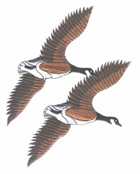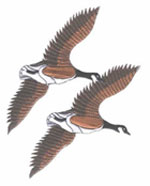The Killing Zone
By Paul Criag
This review is from: The Killing Zone: How & Why Pilots Die (Hardcover) from Michael Kneip
Author Paul Craig's thesis -- that low time pilots face special risks
due to their lack of experience -- is generally unremarkable. After
all, the aviation community has long regarded experience as the single
most important factor in flight safety.
While the author's basic
premise is well known, his thorough examination of the `killing
zone' -- his term for the statistically risky period between 50 and
350 total flight hours - is well handled. With thorough analysis
of NTSB data combined with his own research the author presents a
survey of aviation's "best practices". Pilots will find this
material familiar, but will appreciate the author's detailed, in-depth
approach.
Where `The Killing Zone' stumbles is in its practical
advice for new pilots. The author's suggestions are too general, and
differ little from those found elsewhere. Controversial remedies such
as requiring the flight schools to be more forthright about flying
risks, or implementing mandatory ongoing training for low time pilots,
are avoided altogether. Stronger editing - describing an accident
as having occurred in a "Money M20C" (sic) seems a little sloppy
- would also have helped.
"The Killing Zone" is a worthy
read for all pilots, and new pilots in particular will benefit from
this ambitious, if slightly flawed, examination of flight safety.
......................................
As a pilot who had already made it through the "Killing Zone" and past the 350 hour hour mark, I was doubtful that this book would have much new insight for me.
I was very pleasantly surprised, however, for two reasons. First, Paul Craig did an excellent job describing how each of many procedures should be performed properly AND what the common pitfalls were. So many books tell you how to do it right and then do not mention what the common traps and errors are.
Second, while many of the several hundred suggestions and stories in the book were not new to me, quite a few were, and I learned more than I expected.
For example, the case of a pilot who took off in the morning on a cold day having drained the sumps diligently. 45 minutes into the flight the ice in the tanks (due to improperly replaced fuel caps) melted and caused the engine to stop. The moral here is that if you find loose fuel caps and the temperature is below freezing, it is not enough to simply drain the sumps. You need to put the plane in a hanger (or let the sun warm it up) until you are confident that there is no ice inside.
Another example is LAHSO operations and how they work and that the controllers will tell you how much distance you have if you ask. After reading that I memorized my home field dimensions and am prepared to visualize whether 3000 feet is enough for me to safely LAHS.
Perhaps the best concept he explored was complacency and our natural tendencies as pilots to extrapolate. We miss an item on the checklist once and nothing goes wrong so we think we do not need it. I was sad to read how many people learned this lesson the hard way when they missed a simple yet crucial checklist item that could have prevented a terrible crash.
As long as there are any planes crashing due to human error, this book is relevant and worthwhile.
For more reviews



